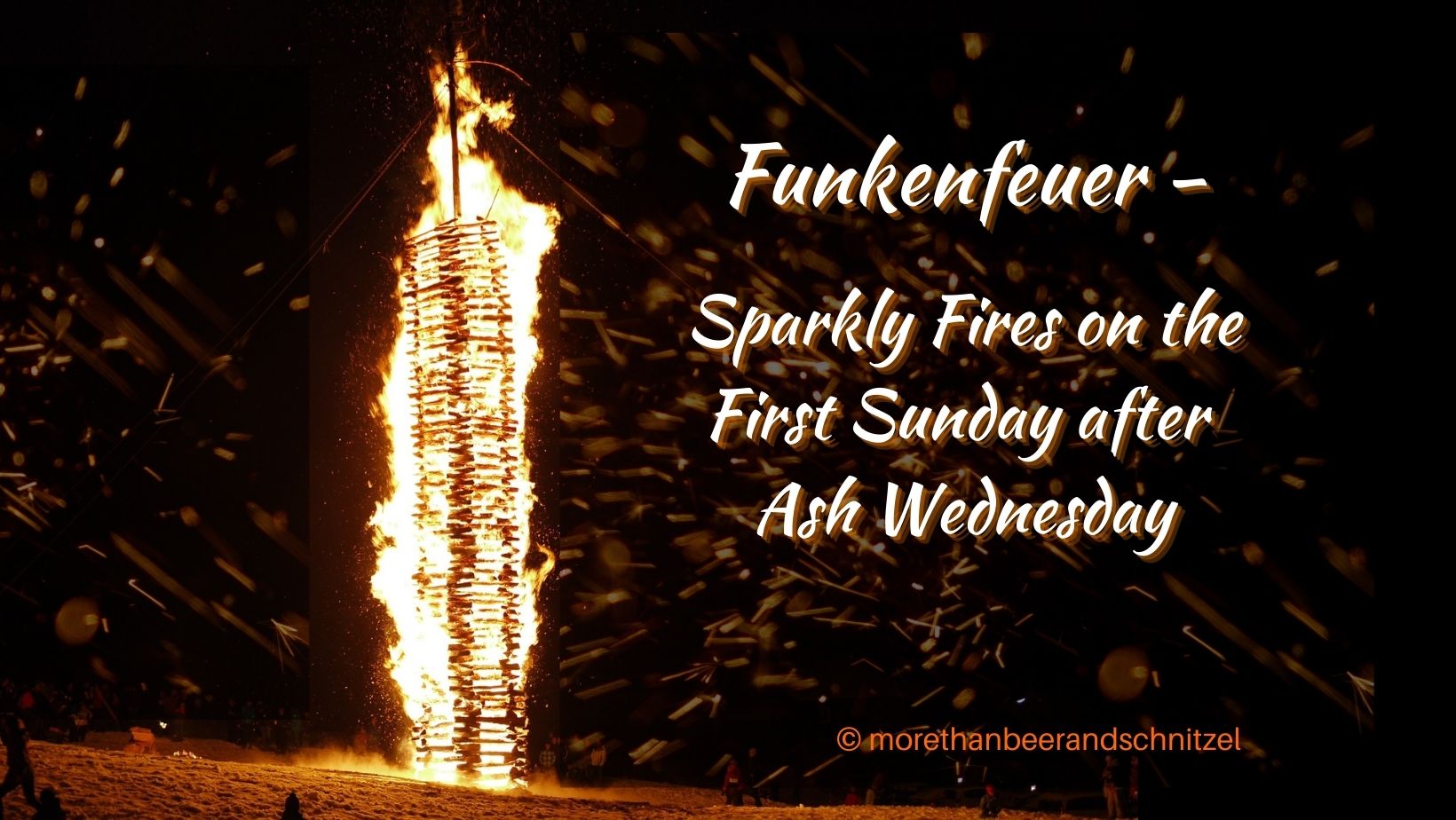The first Sunday after Ash Wednesday is Funkensonntag, lit. sparks Sunday, which is celebrated in the Swabian-Alemannic region. As the name suggests, it involves sparks or rather a fire, the so-called Funkenfeuer (sparks fire).
Depending on the region the Funkensonntag is also called: Holepfannsonntag, Küechlesonntag, Alti Fastnet, or Kassunti.

Where Funkenfeuer take place
The region where the Funkenfeuer takes place is the Alpine region of Liechtenstein, the Allgäu and the Black Forest (South Germany), Vorarlberg (Western Austria), and parts of Switzerland. However, similar fire customs can be observed in many regions, especially in the mountainous areas of Europe.
It is not clear where this custom comes from or how long it has been around. Some say it has pagan roots, and people made bonfires to get rid of the winter and its spirits. Others see the origin in the necessity to rid nature of old vegetation so it can grow and bloom again. However, fire as a cleanser has probably been used by all peoples of all religions, beliefs, cultures, and times.
When Europe was christianized, many old traditions and beliefs were assigned a Christian meaning. While the Funkenfeuer is not connected to any Christian beliefs per se, its date falls onto the first Sunday after Ash Wednesday and is also called Erster Fastensonntag (first Sunday in Lent).

How to make a Funkenfeuer
As with many old traditions, and the Funkenfeuer seems to be hundreds of years old, different regions and towns have slightly different customs. But they all build a tall fire.
A pine tree that was felled on Shrove Tuesday often takes the middle spot in the fire. Though any wood will do. In some areas, the boys in the highest school grade have to collect the fire wood, which can come from cut down branches, old Christmas trees, and brush. The wood pile is also referred to as the Funken.
In other regions it’s all the single men who have to build the fire. In Liechtenstein, there are special Funkenzünfte (guilds) which take care of the festivities. Nowadays, wooden pallets are often used to build a tall fire. It might not look nice when unlit but it makes a visually pretty fire in the dark.

No matter what wood is used or how it is stacked, often a puppet is placed on top of the wooden pile. It is the Funkenhexe, the spark witch, that sometimes has a basket filled with firecrackers. If the fire reaches the witch and the fireworks go off it is a good omen. Should the fire fell the witch before the fire crackers ignite it’s a bad sign. The witch puppet is a stand in for winter and is an invention of the 20th century. It’s also a little concerning since people in the early modern times used burn “witches” on the pyre.
In the book “Sagen, Gebräuche und Sprichwörter des Allgäus. Aus dem Munde des Volkes 2” from 1895, I found the reference that people also pay attention in which direction the puppet falls because that’s where most thunderstorms will come from.


Scheibenschlagen
Since 2010, the Funkenbrauch of the Vorarlberg has been on the UNESCO list of intangible cultural heritage of Austria. Closely related to the Funkenfeuer is the so-called Scheibenschlagen (disc flinging) which also takes place on Funkensonntag, and has been part of the UNESCO intangible cultural heritage of Austria since 2015.
Scheibenschlagen is exactly what it says it is: you fling or hit glowing wooden discs (round or square) from a mountain into the air. The custom of Scheibenschlagen is normally only done by boys in third grade and up and single men. With each flinging a short saying is spoken, in the regional dialect. Either the disc is dedicated to a girl or woman or it’s supposed to hit somebody in the face.


What to eat on Funkensonntag
And what would an event be without food? In Vorarlberg, “Funkenküchle” (varied spelling) are eaten. They are made from yeast dough and baked in fat, similar to Bavarian doughnuts (Ausgezogene) but without the jam in the middle. Funkenküchle look like doughnuts that have been pressed down in the middle. In some towns, the single girls are responsible for making them, in others it’s the “Küchletanten”.
Some more images




While the “Weiße Sonntag” (White Sunday) today refers to the Sunday after Easter, it used to be the first Sunday after Ash Wednesday. That’s why in the issue of Die Gartenlaube of 1888 calls that Sunday “Weißer Sonntag“.
Sources and Resources
- Wiki – Funkenfeuer
- Historisches Lexikon – Finkensonntag
- Wiki – Scheibenschlagen
- Liechtenstein Institut – Funkensonntag
- YouTube Playlist


